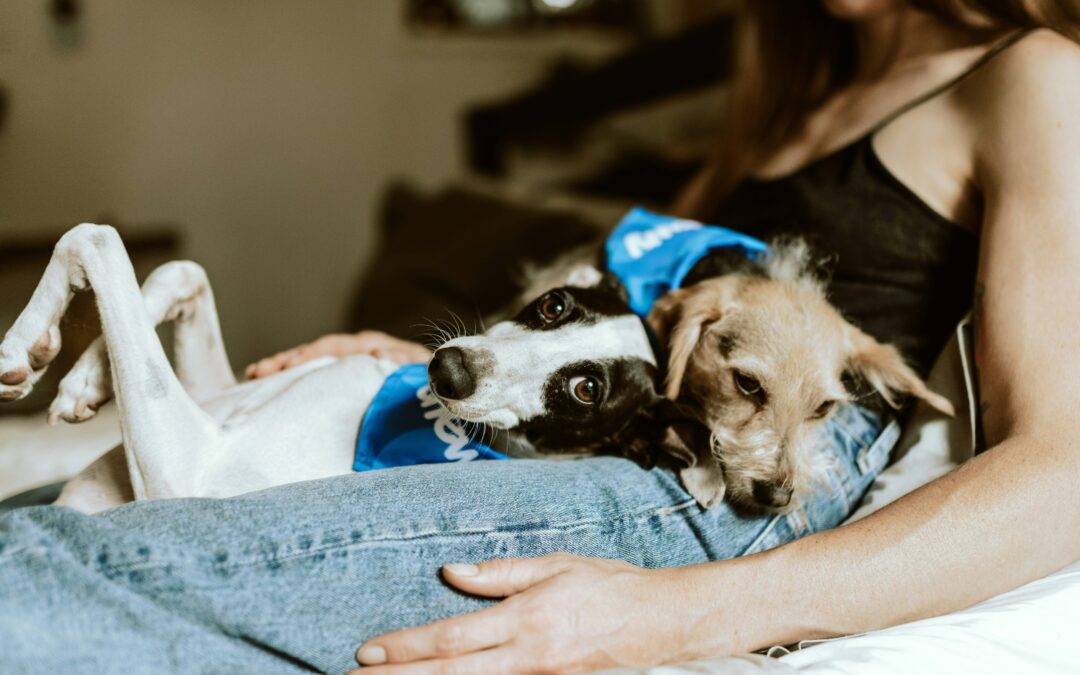Dogs are love, right? So who wouldn’t want more dogs?! That’s just more love! And that’s true, but it can be more complicated than that too. We hope these tips for a multi dog household can help if you’re feeling challenged.
First, let’s consider the benefits of having more than one dog. Because there are plenty. (And if you’re wondering about breed compatibility, check this out.) And then we’ll cover some of the main challenges and tips for how to deal with those.
Benefits of a multi dog household
Companionship & increased exercise
For you but mostly for your dogs, of course. Dogs are pack animals, and though they will consider you part of their pack (don’t you feel lucky??), it’s still good for them to be around other dogs. And when you’re not at home or you’re home but busy, your dogs have built in playmates.
Increased security
The presence of more than one dog can definitely act as a deterrent to intruders. Who wants to mess with that!?
Easier training
Oftentimes, the second dog, especially if they are a puppy, is so much easier to train because you have an assistant in your older dog. That puppy will likely pick up all sorts of stuff from the dog who has already been through it all with you. They’ll follow that bigger dog around, learning the routines and the ins and outs of how things are in your house.
Challenges of a multi dog household
Routines being disrupted
It’s natural when there’s a new member of a household that, for some time, the routine might be disrupted. If you have a dog that is highly routine dependent, this can be hard.
Tip: Try to keep the routines the same for the dog who has been there. Even if that means, for example, separating the puppy while you do normal morning stuff with your older dog until the puppy learns to follow the same routines. Get those routines established as quickly as possible.
Jealousy
Of course, one dog is getting all of the attention in the house, and then suddenly there’s another being who also needs attention. Dogs have feelings, and though they might be happy to have another animal in the house for their own needs, they might not be so happy with all the love that is being showered on the new puppy.
Tip: Make sure to set aside time specifically for the dog(s) who has(have) been with you longer. Set aside time, actually, that is exclusively about each dog. Play time and cuddle time are not necessarily equally as important. It depends on your dog. You know what their core needs are. Make sure to cover those.
Space
Things can get a little crowded but also? Spaces that your already established dog thinks of as their own can cause problems with the new dog.
Tip: Make separate spaces for everyone. This can be easier if you crate your dogs. Make sure each dog has their own crate, their own special blanket, toys, etc. (If you want to start, here are some tips for crate training your dog.) If you don’t crate, this can be difficult, depending on the size of your house, but at the very least, make sure each dog has a own bed in a corner that’s all theirs.
Managing resources
Some dogs are much more aggressive when eating than others. Some dogs will bully other dogs to get their treats or to take their toys or their bed. This could be one of the more challenging parts of having multiple dogs – making sure everyone is getting the resources they need.
Tip: This will be up to you. You’ll need to observe closely and be ready to act quickly to correct rude behavior. You can also separate dogs during eating and treat time. But over time, that could get tiring for everyone so you might want to also look into professional training. (We’re here for that!)
Having more than one dog can be really rewarding and fun. If you start off with rules in mind and delineate space and time right from the beginning, the fun parts will definitely outweigh the hard parts.

